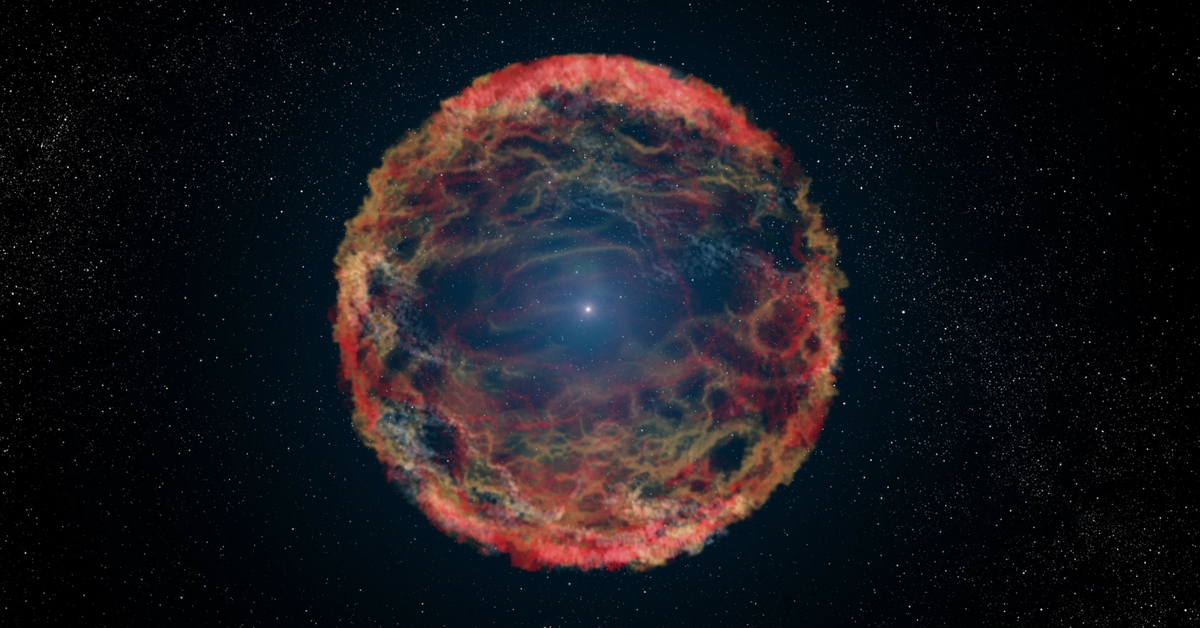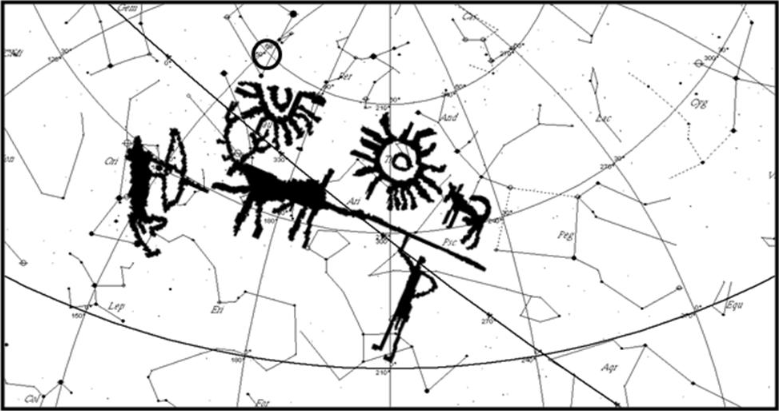Discovered by Indian Scientists, This Rock Art Could Be the Oldest Record of a Supernova!
Presumably dating back to 3,600 BC, the petroglyph in the Burzahama region of Kashmir may be an accurate depiction of a supernova explosion from the prehistoric times.

Space and the mysterious dynamics of the universe is no longer a wholly esoteric knowledge, thanks to astronomy, astrophysics and its pertaining researches.
To take a recent event as an example, the Geminid Meteor shower was something most of us were well informed about before the shower took place.
But imagine the bewilderment of human civilisations that walked the planet almost five thousand years ago, upon witnessing a cosmic event like a supernova explosion.
For the uninitiated, a supernova is the explosion of a star and occurs during the last stellar evolutionary stages of a massive star’s life when the star suffers catastrophic destruction through one final titanic explosion.
Such explosions are the biggest explosions in the universe. From Earth, they appear as a sudden “new” bright star in the night sky, before slowly fading from sight over several weeks or months.
So what connection does an astronomical phenomenon like that have with pre-historic humans?

Interestingly, three astrophysicists from the Tata Institute of Fundamental Research in India have stumbled upon a petroglyph, or rock carving, in the Burzahama region of Kashmir.
Presumably dating back to 3,600 BC, it may be an accurate depiction of a supernova explosion. And if that is the case, then it is the oldest-ever depiction of a supernova found so far.
You may also like: This IIT Professor Led the Indian Scientists Who Detected Einstein’s Gravitation Waves
The discovery has been published in ‘Oldest sky-chart with Supernova record’, a paper co-authored by M N Vahia, Hrishikesh Joglekar and Aniket Sule for the Indian Journal of History of Science. In the paper, the conviction behind the petroglyph being the oldest-known depiction of a supernova explosion has been corroborated with carbon-dating as well as chronological evidence.
“The rock carving depicts what is conventionally believed to be a hunting scene along with two very bright objects in the sky. The two objects in this scene have been interpreted as either the Sun and the Moon or two bright stars nearby,” the paper says.
Ruling out the possibility of the two stellar objects being Sun and Moon (as they can never appear in such proximity in the sky as depicted in the carving), the scientists checked the possibility of a supernova that happened many thousands of light years away from Earth.

They searched the supernova catalogue to look for a possible supernova that could have had the brightness comparable to that of Sun or Moon between 2000 BC and 10,000 BC.
The etching is believed to have been done before 2000 BC and be visible from Burzahama. Only one Supernova remnant, HB9 dating around 3,600 BC, satisfied this condition.
A supernova can be observed even after hundreds and thousands of years after its occurrence, with the high-intensity X-rays continuing to radiate from the site. According to Vahia, the petroglyphs in the region dates back to 2,100 BC, and first recorded settlement in 4,100 BC.
Instead of the initial assumption of the petroglyph depicting a hunting scene, the scientists believe that etching could actually be a star chart depicting nearby constellations surrounding the supernova.
This assumption seems to be fitting quite well when they compared the known location of HB9 and the surrounding stars.

“The whole hunting scene along with the Moon and the Supernova fits quite well into the pattern of stars in the sky. The image of one of the hunters coincides with the Orion; the central stag is same as the Taurus. The hunter on the right may have been formed from stars of Cetus and another animal on the right may be Andromeda and Pegasus.
You may also like: Team of Indian Astronomers Discovered a Supercluster of Galaxies and Named It Saraswati
“The long, curved line in the carving, traditionally interpreted as spear may well be an arc of bright stars. Thus we suggest that this is probably the oldest record of supernova and sky chart found in the Indian Subcontinent,” the paper further states.
Not only is the discovery something that will find a place in the history of mankind, but it also lends one a peek into the prehistoric world of ancient astronomers who ingenuity continues to remain understudied and overlooked.
Like this story? Or have something to share?
Write to us: [email protected]
Connect with us on Facebook and Twitter.
NEW: Click here to get positive news on WhatsApp!
If you found our stories insightful, informative, or even just enjoyable, we invite you to consider making a voluntary payment to support the work we do at The Better India. Your contribution helps us continue producing quality content that educates, inspires, and drives positive change.
Choose one of the payment options below for your contribution-
By paying for the stories you value, you directly contribute to sustaining our efforts focused on making a difference in the world. Together, let's ensure that impactful stories continue to be told and shared, enriching lives and communities alike.
Thank you for your support. Here are some frequently asked questions you might find helpful to know why you are contributing?


This story made me
-
97
-
121
-
89
-
167














